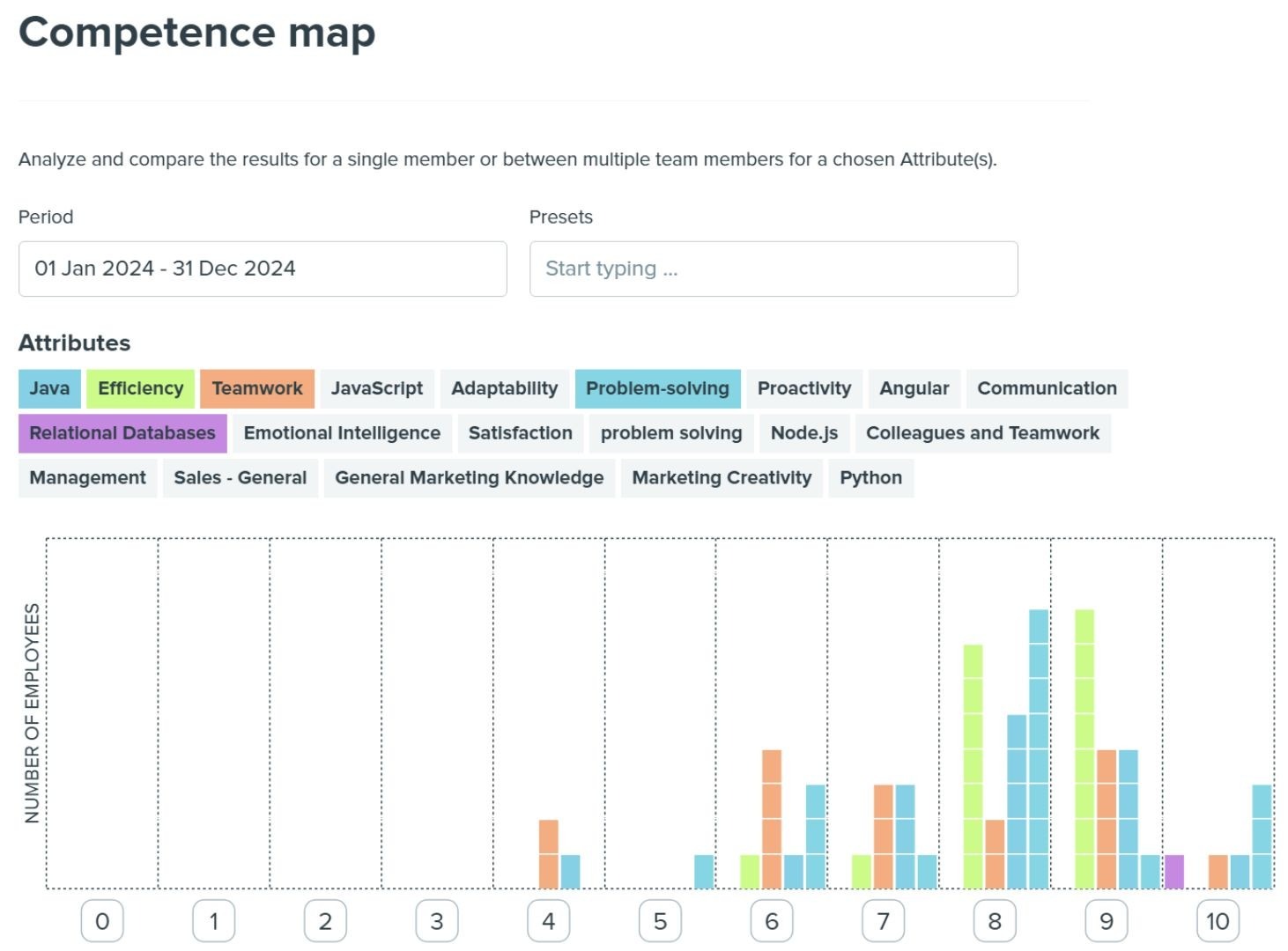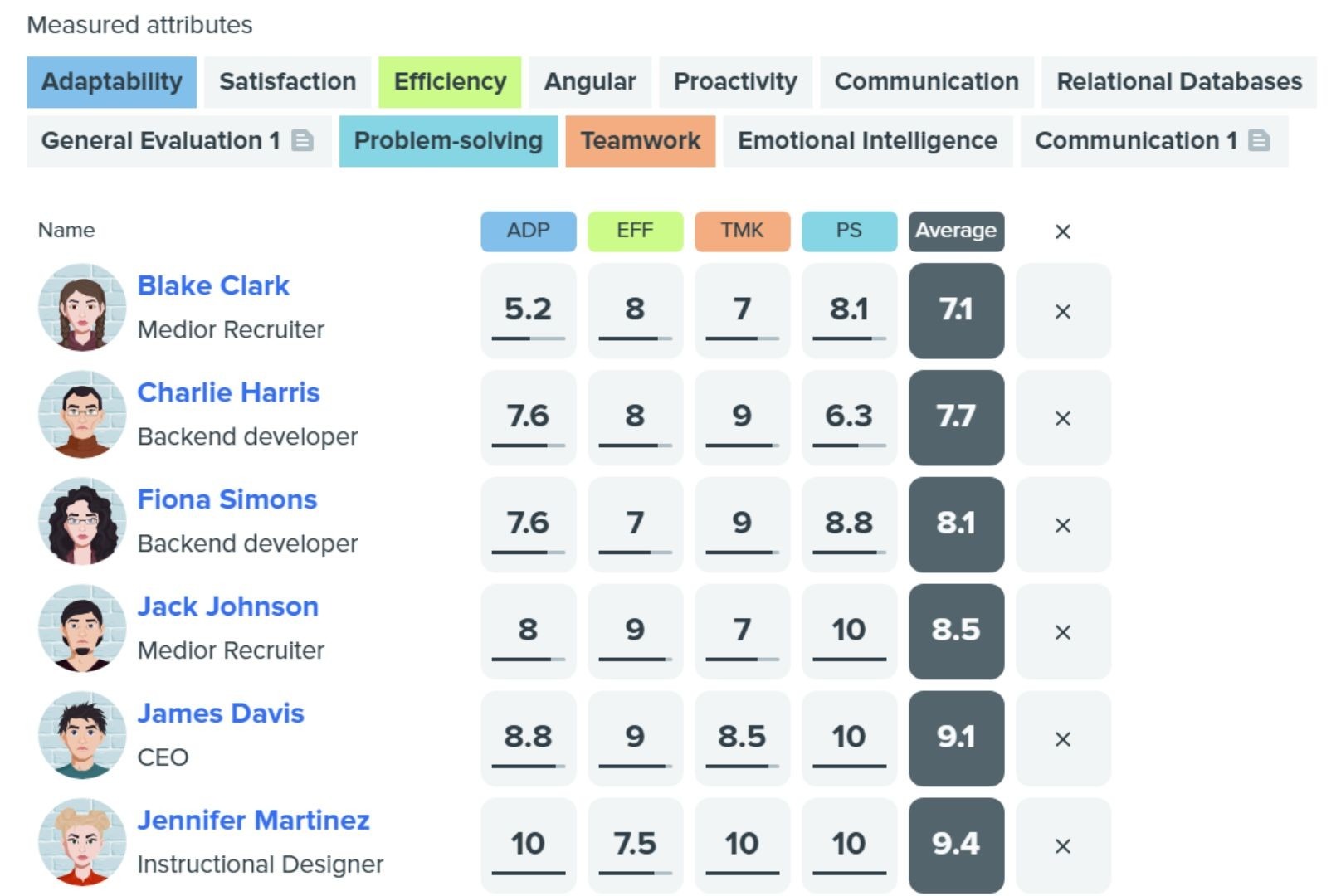Most startups run just fine without formal HR in the early startup growth stages.
When there are 10 or 15 people, you don’t need structured reviews or leveling systems. Everyone talks to everyone, performance is obvious, and decisions are made quickly.
But somewhere between 30 and 50 employees, that starts to break.
Feedback gets lost. Promotions feel inconsistent. Managers are overwhelmed. HR becomes reactive instead of strategic. And suddenly, the systems that worked with 15 people are now holding the organization back.
In this article, we’ll break down what typically falls apart in HR during growth, why patching it with more headcount doesn’t work, and what to build instead, if you want to scale without losing performance.
Why HR works fine in a 15-person startup
At 15 people, no one’s asking for a performance framework. Founders know every team member by name. Feedback typically occurs in real-time, often in Slack or over lunch. Promotions are based on intuition. And when someone’s doing great work, everyone sees it.
In this phase, most startups either lack an HR department or have a single person managing payroll, hiring, and other necessary tasks. And it works. The culture feels personal, informal, and fast.
But here’s the trap: Because this setup works early on, most founders assume it will continue to work at 30, 50, or even 70 people. They delay the structure. They avoid processes. They rely on “trust” and “culture” to carry out performance.
And then, almost overnight, things stop being obvious. But startup growth stages come with predictable friction points, and without structure, they tend to surface all at once.
What breaks during startup growth (and why it happens quietly)
Most teams don’t notice HR systems breaking until the effects are already visible. There’s no single moment where everything fails — things just stop working as well as they used to. Feedback disappears. Promotions cause tension. Managers often feel lost, and performance starts to slip without anyone being able to pinpoint a single cause.
You lose visibility
In a 15-person team, it’s easy to know who’s performing and who’s struggling. However, once you reach 40 or 50 people, that visibility begins to fade. Managers are stretched across multiple projects, team leads lack full context, and decisions are made based on impressions rather than input. Without a structured way to surface performance signals, it becomes easy to overlook your top contributors and overestimate those who are not performing as well.
Promotions feel random
Without defined levels or growth expectations, promotions start to feel political or arbitrary. Some receive a new title because they've asked for it or because they've been around longer, while others, who do equally valuable work, see no path forward. It’s not about entitlement. It’s about transparency. If people don’t know what’s expected or how decisions are made, motivation drops fast.
Managers are underprepared
As teams grow, top individual contributors often become managers, not because they’re trained for it but because someone has to lead. And without support or structure, they’re left improvising. They skip 1:1s when things get busy, avoid giving difficult feedback, and prioritize delivery over development. The result isn’t failure — it’s stagnation. The team stops growing, and no one really knows why.
💡 A Sifted study found that 63% of startup employees feel their managers were unprepared when promoted, leading to biased or ineffective performance reviews.
HR becomes reactive
At this stage, HR is usually understaffed and overrun. They’re managing onboarding, helping with urgent hires, collecting feedback manually, and trying to keep performance reviews from falling apart. But without a system to connect input, skills, and growth, everything stays fragmented. Surveys live in Google Forms, goals are scattered across Notion, and reporting becomes a monthly scramble. HR spends more time chasing input than enabling decisions.
Why hiring more HR doesn’t fix the system
As startups grow and problems start piling up, from unclear feedback loops to inconsistent promotions, the instinctive solution is often to “add someone to HR.” And while that might relieve short-term pressure, it rarely solves the core issue.
Without a clear system, even a larger HR team ends up doing the same things as before, just with more people and slightly faster. They’re still collecting feedback manually, still chasing managers for input, and still trying to summarize performance from memory and Slack messages.
More headcount doesn’t create clarity. It doesn’t define career paths, structure reviews, or enable data-backed decisions. It can make things worse: everyone assumes someone else “owns” the process, but no one’s building it.
The truth is that scaling HR isn’t about the number of people in the department; it’s about whether the right system is in place. One that makes performance visible, provides consistent feedback, and ensures fair decisions without turning every review cycle into a fire drill.
Startup growth stages and what HR needs to get right in each
Startup growth stages introduce different risks for people management, and most teams underestimate how quickly things shift. What works with 15 people will fail with 50. What seemed like “nice to have” at 30 becomes critical at 80.
Ignoring this progression is where most teams go wrong. They often continue using early-stage habits too far into the growth stage, and by the time they try to correct things, they’re already behind.
Here’s how HR needs to evolve across the typical growth curve and what to build before things break.
Stage 1: Early team (1–20 people)
- HR reality: No real HR team. Founders do hiring, feedback is informal, and performance is judged by proximity.
- What works: Trust, direct communication, no process.
- What breaks: No documentation, no development paths, no scale.
At this stage, you don’t need formal systems, but you should be writing down what works. Otherwise, you lose it the moment you grow.
Stage 2: Building momentum (20–50 people)
- HR reality: Typically, HR is handled by a single person. Some structure exists, including onboarding and basic performance cycles, but most of it is still manual.
- What’s needed: First version of a leveling framework, clear ownership over reviews, and structured feedback templates.
- What breaks: Promotions feel random, performance reviews become inconsistent, and quiet performers fall through the cracks.
Stage 3: Scaling up (50–100 people)
- HR reality: Organizational structure becomes more complex. Team leads manage people for the first time. Leadership wants reporting, but data is scattered.
- What’s needed: 360° feedback, growth-oriented 1:1s, manager coaching, and consistent performance tracking.
- What breaks: HR spends too much time gathering feedback, not enough time acting on it. There’s no visibility into who is ready for more or who is stuck.
💡 According to TechR Series, HR analytics can significantly boost workforce productivity. Companies using structured HR data report meaningful gains in efficiency and output
How Atlassian used people analytics to scale smarter
Atlassian, one of the most widely respected product-led tech companies, faced a challenge familiar to many growing teams: how to keep performance and culture aligned as headcount rapidly increases. Instead of relying on gut instinct or scattered feedback, they built a structured people analytics approach to guide decision-making at every level.
In this case study, Atlassian’s people team walks through:
- How they connected performance and engagement data to uncover blind spots
- Why structured systems — not just more surveys — created more impactful feedback
- How they equipped managers with insight to support development across fast-scaling teams
“It’s not about data for the sake of it. It’s about helping our leaders ask better questions.” — Atlassian People Team
Structured tools like Kadar are built to support performance through all startup growth stages, from early chaos to scaling up.
How Kadar supports performance during startup growth stages

Most HR tools provide forms, dashboards, and templates, but not a comprehensive system. That’s where Kadar is different. It was built for scaling tech organizations that need structure without the overhead.
Whether you’re at 30 people or pushing past 100, Kadar helps you bring clarity into performance and growth. Without chasing feedback across Slack, Notion, and Excel. Without guessing who’s ready for the next step. Without reinventing your process every quarter.
Here’s how it fits into the growth-stage reality:
One screen, all perspectives

With Kadar, you don’t have to piece together feedback from different tools. Self-evaluations, peer feedback, and manager input are all presented side by side in a single visual view, highlighting alignment or gaps immediately. You can spot who’s undervaluing their impact, or where manager expectations diverge from the team’s perspective, and act on it.
Structured, skill-based feedback ready to go

Instead of starting from a blank survey or tweaking generic templates, Kadar comes preloaded with skill-based questions tied to levels. You can use them as-is or adjust to fit your roles, but you’re never starting from scratch. Every review is connected to a career framework, not just opinions.
Reviews that lead directly into action

After each performance cycle, insights don’t just sit in a document; they inform individual action plans directly. These plans are visible to both the manager and the employee, tied to ongoing 1:1s, and trackable across quarters. Growth is no longer vague. It’s visible, structured, and aligned.
Real reporting, no extra work

Kadar tracks trends across individuals, teams, and skill areas automatically. HR can identify who is ready for more responsibility, where development is stalling, and which teams require support. Leadership receives the insights they request without additional preparation or exporting. HR finally moves from manual effort to decision support.
Growth without structure doesn’t scale
Startups don’t fall apart because they grow too fast; they fall apart because they try to grow without structure. And HR is often the first place that cracks show.
What worked with 15 people, such as ad-hoc feedback and gut-feel promotions, will quietly fail by the time you reach 50 or 80. Performance becomes invisible, development stalls, and decisions start feeling unfair, even if they’re well-intentioned.
If you’re in that transition, growing rapidly but unsure how to keep people aligned and moving forward, now is the time to invest in structure.
If you’re navigating one of the critical startup growth stages, now is the moment to add structure before the gaps become permanent.
No more process. It's just the right system.
Kadar helps you build that system: one view, one process, no guesswork.


